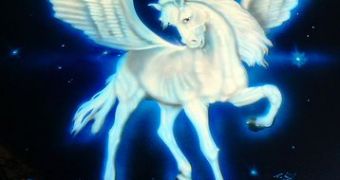After the Perseids in August, September comes with the autumn constellations, brought by the mythical winged horse Pegasus.
The September constellations have few or no bright stars at all, not even Pegasus, which is one of the largest constellations in area.
The star pattern that is most obvious to the naked eye is the Great Square of Pegasus made out of four second magnitude stars that make the body of the horse.
Furthermore, Alpheratz, the brightest of them all, is not even an official member of the Pegasus constellation, as it belongs to the neighboring Andromeda.
The brightest star in the Pegasus constellation is not part of the square, it marks the head of Pegasus, off to the west; it is called Enif, the Arabic word for “nose”.
As September comes, The Summer Triangle is replaced by the planets Jupiter and Uranus, along with constellations named after mythical sea creatures.
West from Enif, in the constellation Aquila, is Delphinus, one of the few constellations that actually resembles its name.
Under Pegasus there are three zodiac constellations – Capricornus, Aquarius and Pisces.
Yet again, no bright star whatsoever.
Piscis Austrinus (the southern fish) is located further south and has the only bright star in the area, Fomalhaut, according to SPACE.com.
This star is 25 light-years from Earth, and became popular in 2008 when it became one of the first stars to have a planet that was observed with telescopes.
At the east of Fomalhaut is Cetus the Whale, a constellation that has the only other bright star around here, Deneb Kaitos – the tail of the whale.
Cetus the Wale also has a variable star called Mira, which is now too faint but, over the next few months it will become one of the brightest in this constellation.
If you're passionate about watching stars, you can take your telescope or your binoculars and you might spot two other planets apart Jupiter, Uranus and Neptune.

 14 DAY TRIAL //
14 DAY TRIAL //